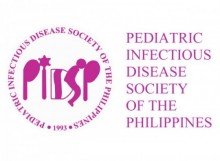Journal 2017 Vol.18 No.2
Clinical Profile and Treatment Outcomes of Childhood Extra-pulmonary Tuberculosis in a Children’s Medical Center
Melody O. Kiat, M.D.
Melody O. Kiat, M.D.
Abstract
Background: Extra-pulmonary tuberculosis comprises 1.1% of all tuberculosis (TB) cases notified in the Philippines.34 Its diagnosis poses a challenge for clinicians due to the protean ways in which the disease presents. Monitoring its treatment outcome is essential to evaluate the effectiveness of the intervention.
Objective: This study aims to determine the clinical profile and treatment outcomes of children with extra-pulmonary tuberculosis in a children’s medical center.
Methods: This is a retrospective cross-sectional study conducted in a children’s medical center. The medical records of children less than 15 years with extrapulmonary tuberculosis from 2010 to 2014 were reviewed. Demographic, clinical data and treatment outcome were noted.
Results: A total of 140 charts were reviewed. Male to female ratio is 2.3:1. The most common age group was 0-4 years and central nervous system (CNS) was the most predominant site. New cases were 96.4% and 97.1% were clinically diagnosed. History of TB contact was elicited in 36.4% and tuberculin skin test was positive only in 39.3%. The most common presenting symptoms were in association with the site of infection. Results of the different diagnostic modalities used have contributed significantly in establishing the diagnosis. Treatment outcome was favorable at 79.3% while deaths were seen in 11.4% of cases.
Conclusion: The study has shown that proportion of patients with extra-pulmonary tuberculosis was 3%. Treatment outcome was satisfactory at 79.3% but was not significantly associated with the site of infection.
